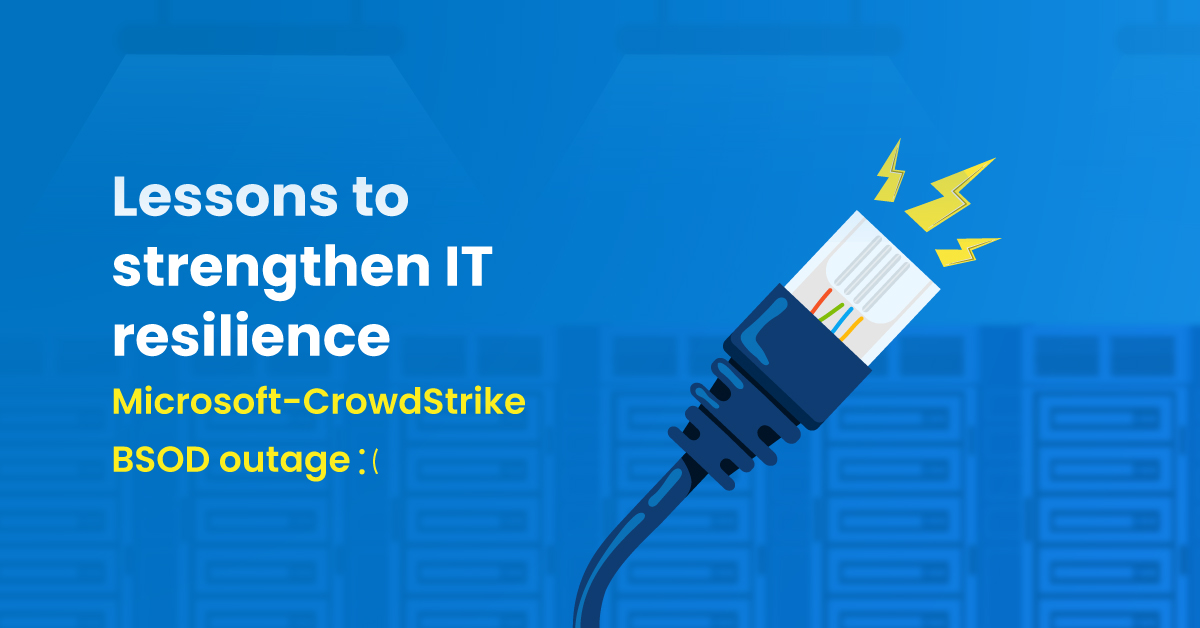Navigating digital disruptions: Lessons from the Microsoft outage

The recent Microsoft-CrowdStrike outage serves as a stark reminder of the interconnectedness and fragility of our digital infrastructure. What began as a seemingly isolated issue with a software update rapidly escalated into a widespread disruption, affecting businesses across multiple sectors.
The incident highlights the potential consequences of software errors, particularly those that impact core system components. As digital dependency deepens, organizations must prioritize building resilient IT environments to mitigate the impact of such disruptions.
The effect of the CrowdStrike outage
- Root cause: A recent software update from CrowdStrike caused BSOD errors, taking many Windows machines offline.
- Critical dependencies: Many essential business functions, including databases, email systems, financial transactions, and customer support, rely on Windows.
- Domino effect: The server outages led to failures across dependent applications and services, causing a chain reaction that disrupted multiple organizational processes.
- Operational shutdown: As the impact spread, business activities slowed significantly, potentially leading to substantial revenue losses.
Building resilience for the future
- Diversify your cloud infrastructure: The recent Microsoft outage outlines risks associated with relying on a single cloud provider. Diversifying your cloud infrastructure ensures that you have vendor-neutral disaster recovery and backup options, protecting your operations from disruptions. You reduce the likelihood that an issue with one provider will bring down your entire system. This approach enhances resilience and flexibility, ensuring digital availability and optimal user experience 24/7.
- Importance of configuration code: The CrowdStrike incident highlights that configuration files are as crucial as the underlying code. Frequent updates to these files can introduce vulnerabilities if not carefully tested. Though formatted in JSON or XML, these files serve as the source code for software, making their integrity essential. As demonstrated by the incident, a configuration error led to system crashes, emphasizing that "configuration is code". Thorough validation and testing of configurations are vital for ensuring system stability, especially in security software.
- Implement redundancies: Having backup systems with different cloud providers or in different regions ensures that you can maintain operations during outages, minimizing downtime and associated costs.
- Real-time monitoring and observability: This situation underscores the importance of resilient IT infrastructure and the need for effective monitoring solutions. While no system can completely prevent outages, having a tool like Site24x7 can make a difference by helping your IT team respond swiftly and minimize damage. Site24x7 is designed to:
- Pinpoint affected machines: Quickly identify which devices are experiencing problems, allowing you to focus your resources on critical systems.
- Understand dependencies: Monitor how different applications and services interact, providing a clear picture of how the outage is cascading across your environment.
Additionally, for those dealing with disruptions like the recent Microsoft BSOD outage, Site24x7's StatusIQ can offer some useful features. The free, 30-day Blue Plan trial lets you explore how StatusIQ facilitates incident updates and provides postmortem attachments. It’s an option worth considering if you’re looking to improve your communication during such events.
Investing in these areas can help organizations significantly improve their ability to withstand disruptions and maintain business continuity. By adopting a proactive approach and implementing the recommended strategies, organizations can better prepare for future challenges and protect their operations.